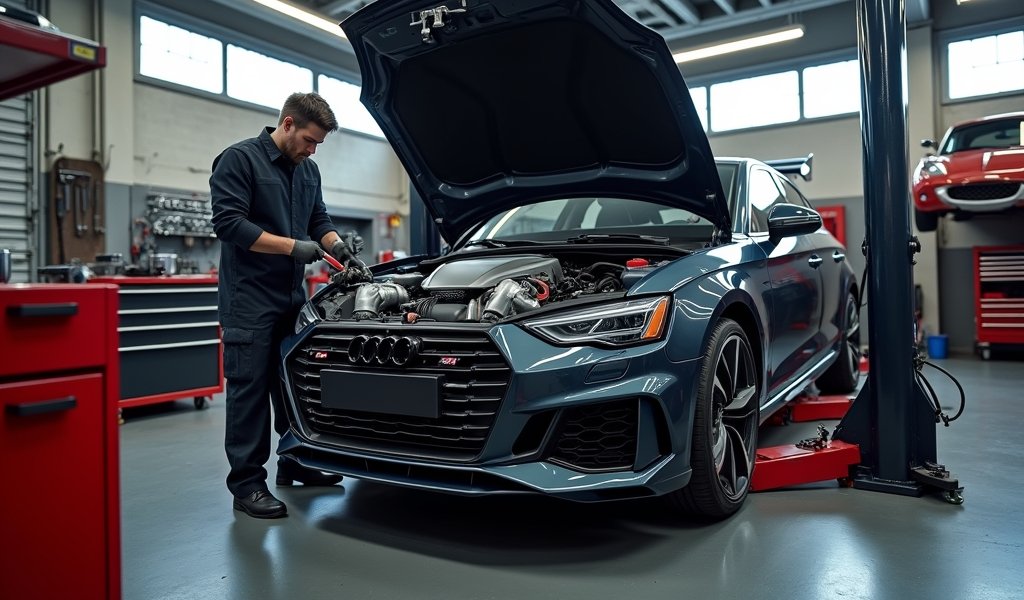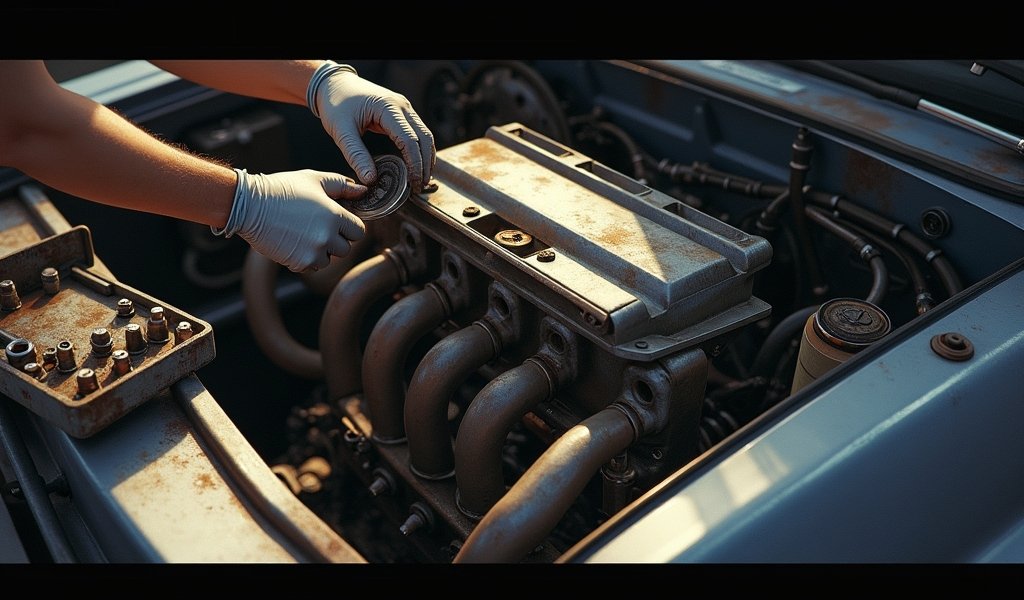Overview
This article provides a detailed guide to diagnosing and fixing variable intake runner system (VIRS) problems, covering symptoms like power inconsistency and rough idling, along with DIY repair methods including carbon cleanup, vacuum line replacement, and actuator repair. It emphasizes that while many VIRS issues can be fixed at home with basic tools—potentially saving hundreds in repair costs—preventative maintenance is crucial for optimal engine performance, and some complex problems may still require professional assistance.
Table of Contents
- Understanding Variable Intake Runner System
- Common Symptoms of VIRS Problems
- Tools Needed for DIY Diagnosis
- Diagnosing VIRS Issues
- DIY Fixes for Common VIRS Problems
- Preventative Maintenance
- When to Seek Professional Help
- Conclusion
- Frequently Asked Questions
Understanding Variable Intake Runner System
Ever notice how your engine sometimes feels like it’s struggling to breathe? That’s where your variable intake runner system comes into play. This ingenious component is essentially your engine’s respiratory system, controlling how air flows into the combustion chambers.
At its core, the variable intake runner system (VIRS) optimizes airflow to your engine at different RPM ranges. It’s a bit like having adjustable breathing tubes that change size depending on whether you’re jogging or sprinting. At lower speeds, your engine benefits from longer intake runners that deliver better torque. As you press the accelerator, the system shifts to shorter paths, allowing more air to rush in for increased horsepower at higher RPMs.
Most modern vehicles employ one of three types of VIRS:
- Mechanical systems that use direct physical connections to the throttle
- Vacuum-operated systems that respond to engine pressure changes
- Electronic systems managed by your car’s computer
The beauty of a properly functioning variable intake runner system is that it gives you the best of both worlds – satisfying low-end grunt when accelerating from a stoplight and ample power for highway passing. It’s also why many drivers notice a distinct change in engine character when this system starts failing.
The intake manifold runner control is the heart of this system, orchestrating the opening and closing of flaps or valves at precisely the right moments. When working correctly, you’ll never notice it – your car just performs as expected across all driving conditions.
Common Symptoms of VIRS Problems

When your variable intake runner system isn’t happy, your car will definitely let you know. The most common complaints I hear in my garage involve inconsistent power delivery – that feeling where your car pulls strongly in some RPM ranges but seems to fall flat in others.
Here’s what to watch for:
- Check engine light illumination (often with P2004-P2017 range codes)
- Noticeable hesitation or “flat spot” during acceleration
- Poor fuel economy without changes in driving habits
- Rough idle or stalling
- Unusual intake noises – particularly clicking or rattling sounds
- Reduced overall performance across all speed ranges
One telltale sign that I’ve encountered repeatedly is what my customers describe as a “Jekyll and Hyde” personality in their cars. The vehicle might feel perfectly normal during casual driving but completely transform (and not in a good way) when you need to accelerate quickly.
Another common symptom appears when monitoring your manifold absolute pressure readings, which often show irregular fluctuations when VIRS components are sticking or failing to operate smoothly.
The good news? Many of these issues are fixable right in your own garage with some basic tools and mechanical know-how. Let’s look at what you’ll need to tackle this job.
Tools Needed for DIY Diagnosis
Before diving under the hood, gather these essential items to make your VIRS diagnosis and repair go smoothly:
Basic Hand Tools:
- Socket set (metric and standard sizes)
- Screwdriver set
- Pliers (standard and needle-nose)
- Torque wrench for proper reassembly
Diagnostic Equipment:
- OBD-II scanner (even a basic $30 model will identify most VIRS fault codes)
- Multimeter for testing electrical connections
- Vacuum pump/gauge kit for vacuum-operated systems
Cleaning Materials:
- Throttle body cleaner or carburetor cleaner
- Intake system cleaner
- Lint-free rags
- Small brushes for removing carbon deposits
Possible Replacement Parts:
- Vacuum lines (if cracked or deteriorated)
- Actuator motors (if electrical testing reveals issues)
- Gaskets and O-rings (always replace these during reassembly)
Don’t worry if this seems like a lot – most home mechanics already have the majority of these tools, and the investment pays for itself many times over compared to shop labor rates. Even if you need to purchase everything on this list, you’re still likely to spend less than half the cost of professional repair.
As noted by Popular Mechanics, having the right tools not only makes repairs possible but also significantly reduces frustration and potential damage during the process.
Diagnosing VIRS Issues
Now that you’re properly equipped, let’s walk through a systematic approach to diagnosing variable intake runner system problems:
Step 1: Read the Fault Codes
Connect your OBD-II scanner and look for codes in these ranges:
- P2004-P2017: Direct VIRS component issues
- P0660-P0668: Intake manifold tuning valve circuit problems
- Manufacturer-specific codes (consult your vehicle’s service manual)
Write down all codes before clearing them – this information helps direct your investigation to specific components.
Step 2: Visual Inspection
With the engine cool, locate your intake manifold and VIRS components. Look for:
- Disconnected or damaged vacuum lines
- Loose electrical connectors
- Visible physical damage to actuators
- Oil or debris contamination
- Corrosion on electrical terminals
Step 3: Operational Testing
For electronic systems:
- Use your multimeter to verify proper voltage at actuator connectors
- Check for continuity in wiring harnesses
- If possible, use your scanner’s bidirectional controls to activate the VIRS while observing its movement
For vacuum-operated systems:
- Connect your vacuum gauge to check for proper pressure
- Listen for hissing that indicates vacuum leaks
- Manually apply vacuum to actuators (when engine is off) to verify movement
Step 4: Movement Check
With the engine off and cool:
- Gently attempt to move intake flaps or butterflies by hand
- Check for binding, sticking, or excessive resistance
- Inspect for carbon buildup that might restrict movement
During diagnosis, pay particular attention to the throttle position sensor calibration, as incorrect settings can sometimes mimic VIRS problems and lead you down the wrong diagnostic path.
According to Engine Labs research, even partial restriction of runner movement can significantly impact performance across the RPM range, so be thorough in your inspection.
DIY Fixes for Common VIRS Problems

Now for the satisfying part – actually fixing what’s broken! Here are the most common variable intake runner system issues I see in my shop, along with step-by-step fixes that you can perform at home:
Carbon Buildup Cleaning
Carbon deposits are the number one enemy of smooth VIRS operation. Here’s how to remove them:
- Remove necessary components to access the intake runners (consult your vehicle’s service manual)
- Spray throttle body cleaner on affected components
- Use a soft-bristled brush to gently scrub away deposits
- Wipe clean with lint-free cloths
- Verify free movement of all components before reassembly
For stubborn carbon, you may need to repeat the cleaning process several times. Patience is key – never use metal tools that could damage the runners.
Vacuum Line Replacement
Cracked vacuum lines are a common culprit in vacuum-operated systems:
- Carefully trace and label each vacuum line before removal
- Remove damaged lines one at a time (to avoid confusion)
- Replace with appropriate diameter vacuum tubing
- Secure with proper clamps where necessary
- Test system operation after all lines are replaced
Electrical Connection Repair
Corroded connections often cause intermittent VIRS problems:
- Disconnect the battery before beginning work
- Carefully unplug electrical connectors
- Clean terminals with electrical contact cleaner
- Inspect for bent pins or damaged sockets
- Apply dielectric grease before reconnecting
- Secure connections firmly
Actuator Replacement
If testing reveals a faulty actuator:
- Disconnect battery for safety
- Remove electrical connections to the actuator
- Unbolt actuator from mounting points
- Install new unit, being careful not to overtighten
- Reconnect electrical connectors
- Clear fault codes after installation
Freeing Stuck Components
Sometimes mechanical components just need a little help:
- Apply penetrating lubricant to pivot points
- Work components gently back and forth by hand
- Clean excess lubricant to prevent dirt attraction
- Verify smooth operation through full range of motion
Remember that patience and methodical work are your best friends when tackling VIRS repairs. Take photos before disassembly to ensure everything goes back together correctly. And while working quickly is nice, accuracy is far more important than speed.
Preventative Maintenance
An ounce of prevention is worth a pound of cure – especially when it comes to your variable intake runner system. Here’s how to keep problems at bay:
Regular Cleaning Schedule
Prevent carbon buildup before it causes issues:
- Use quality top-tier fuels with higher detergent content
- Add a bottle of quality intake cleaner every 10,000-15,000 miles
- Consider a professional intake cleaning service every 30,000-50,000 miles
The “Italian Tune-Up”
This old mechanic’s trick really works! Occasionally (and safely):
- Drive your vehicle through the full RPM range
- Spend some time at higher engine speeds (where safe and legal)
- This helps “exercise” the VIRS and burn off light carbon deposits
Regular Inspection
- Make VIRS inspection part of your routine oil change procedure
- Check vacuum lines for cracking or hardening
- Listen for unusual intake noises that might indicate developing problems
As the Society of Automotive Engineers notes in their research, preventative maintenance of intake systems can extend their functional life by 40% or more, making this a worthwhile investment of your time.
When to Seek Professional Help
While many VIRS issues can be tackled in your driveway, some situations call for professional intervention:
- Internal runner damage requiring manifold replacement
- Complex electrical faults that don’t resolve with basic troubleshooting
- Issues that return shortly after your DIY repairs
- Situations requiring specialized tools or software access
If you find yourself facing these scenarios, don’t hesitate to consult a professional. Even experienced DIYers sometimes need a helping hand, and knowing when to call in reinforcements is a sign of wisdom, not weakness.
In my years as a mechanic, I’ve seen many customers save substantial money by handling the simpler VIRS repairs themselves while seeking professional help only for the truly complex issues.
Conclusion
Your variable intake runner system might seem mysterious, but it’s actually one of the more approachable engine systems for DIY repair. With the right tools, some mechanical aptitude, and the guidance provided in this article, you can diagnose and fix many common VIRS issues without breaking the bank.
Remember that proper maintenance is your best defense against VIRS problems. Regular cleaning, quality fuel, and the occasional “spirited” drive can keep your intake runners operating smoothly for years to come.
When your variable intake runner system is performing optimally, you’ll enjoy better fuel economy, smoother acceleration, and more consistent power delivery across all driving conditions. That’s well worth the time investment for any DIY mechanic.
So roll up those sleeves, grab your tools, and give your engine the breathing room it deserves. Your car (and wallet) will thank you!
Frequently Asked Questions
What exactly does a variable intake runner system do?
It optimizes airflow to your engine at different RPM ranges. The system adjusts the length of intake passages to maximize torque at low speeds and power at high speeds.
How do I know if my VIRS is failing?
Common symptoms include inconsistent power delivery, a check engine light, poor fuel economy, and unusual intake noises. You might also notice hesitation during acceleration or rough idling.
Can I drive with a faulty VIRS?
Yes, but you’ll experience reduced performance and potentially worse fuel economy. Many vehicles enter a “limp mode” that allows basic operation but with compromised efficiency.
How much can I save by fixing VIRS issues myself?
Professional VIRS repairs typically range from $300-$800 depending on the vehicle. DIY repairs usually cost between $20-$150 in parts, potentially saving hundreds.
How often should I clean my variable intake runner system?
For preventative maintenance, cleaning every 30,000-50,000 miles is recommended. Vehicles driven primarily in urban, short-trip conditions may benefit from more frequent cleaning.

